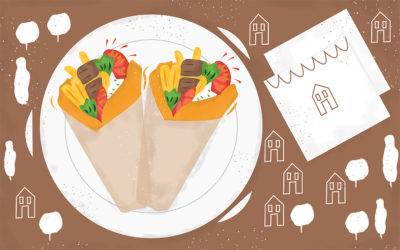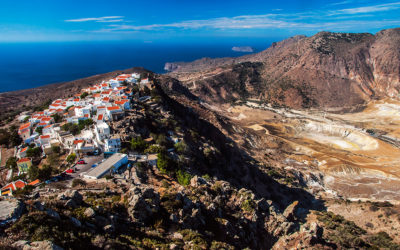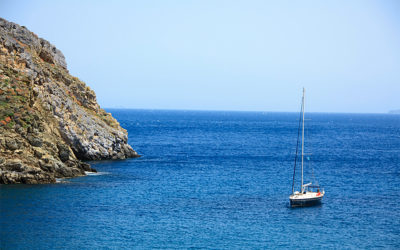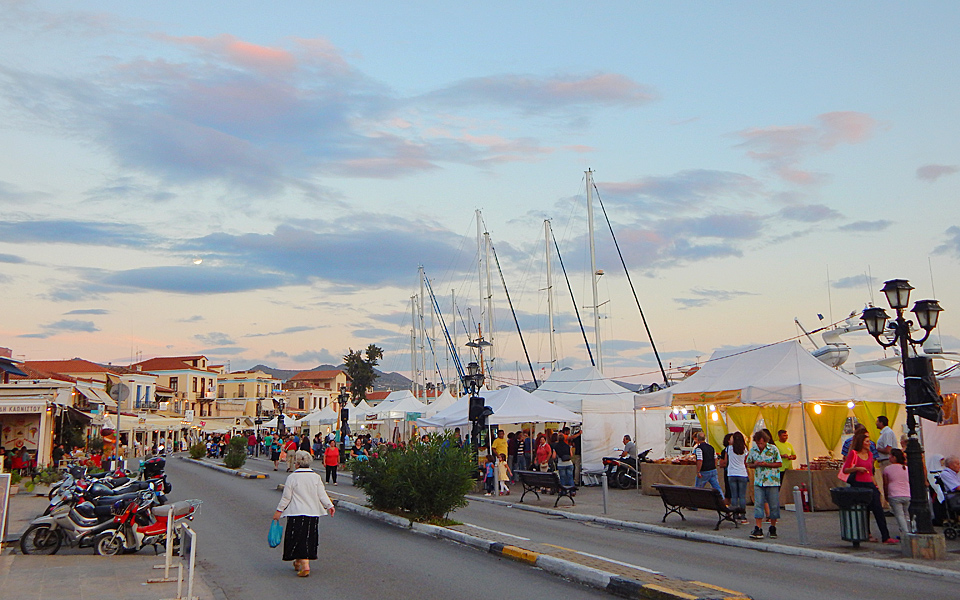
Destinations
Going Nuts for Pistachios
“What did you enjoy the most?” asks a father of his kids, on the boat leaving Aegina. “The pistachio paste,” they reply, almost in unison. Just an hour’s boat ride from Athens, the island’s inhabitants, producing the world famous appellation nut, have proven their inventiveness: pistachio pralines, pistachio shell jewelry, works of art imitating nature, pistachio honey, baclava, pistachio beauty products, traditional pottery, porcelain and naturally, ample quantities of baked or raw nuts, all coming from small local producers.
Under the suggestive light of the rare supermoon, a phenomenon we hadn’ t witnessed in 33 years, with the wooden fishing boats and neoclassical harbor buildings (built under Kapodistrias, Greece’ s first governor), Aegina’s 7th Pistachio Festival was a thing of magic.
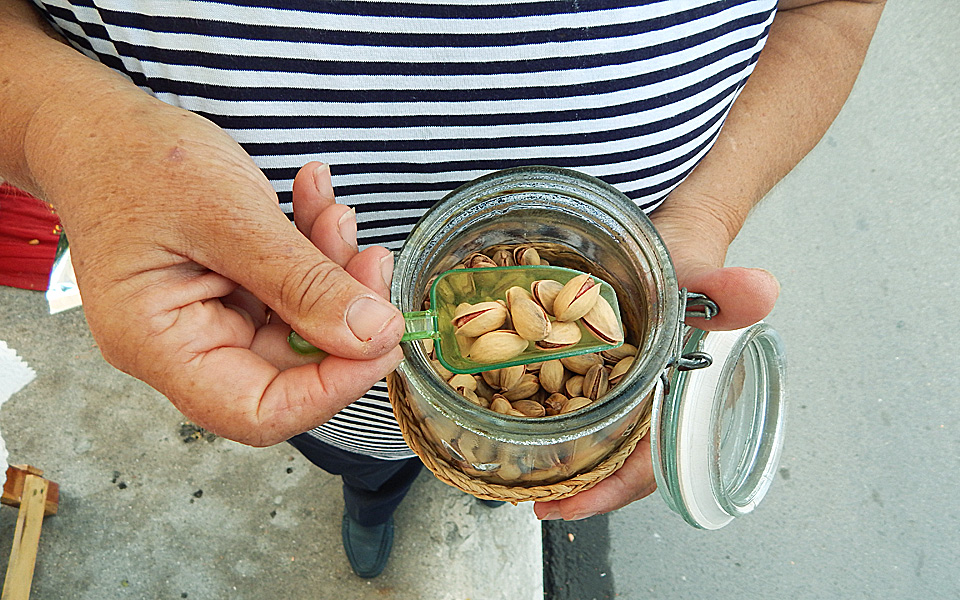
Although the weather was cloudy during the week, summer was still in the air. A cool sea breeze kept the hair from our faces, while we gently brushed against the occasional child’ s bicycle or collided with a soap bubble, blown by kids’ devices, all according to time honored tradition. Every year in September, dozens of white kiosks dot the harbor, selling every imaginable ware. Activities are held, while cars are banished, giving the street over to pedestrians. Parents let their kids roam free, the locals ride their bicycles and cafes are filled early on with ouzo loving patrons and at night with cocktail drinkers, swinging in the festival’s rhythms.
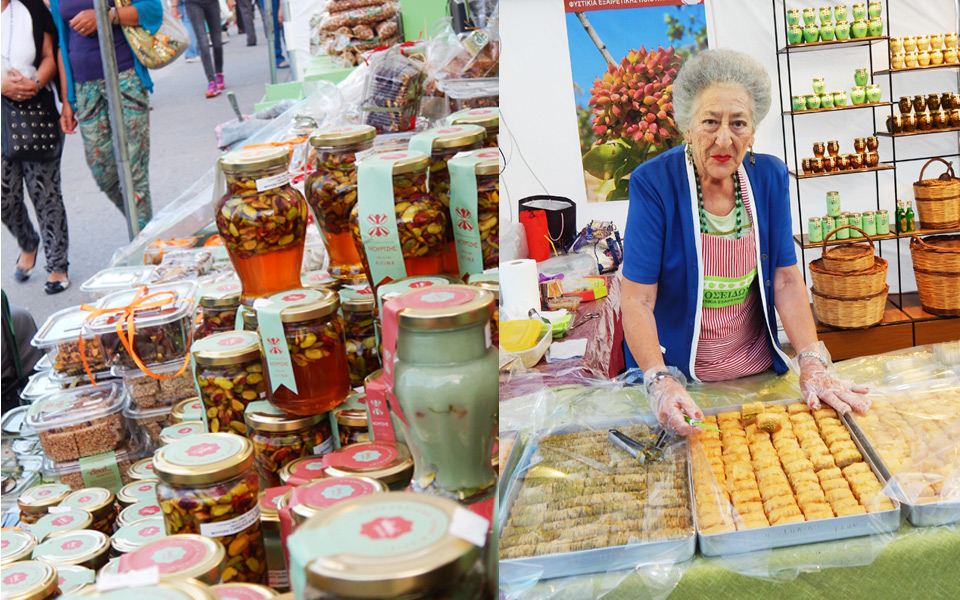
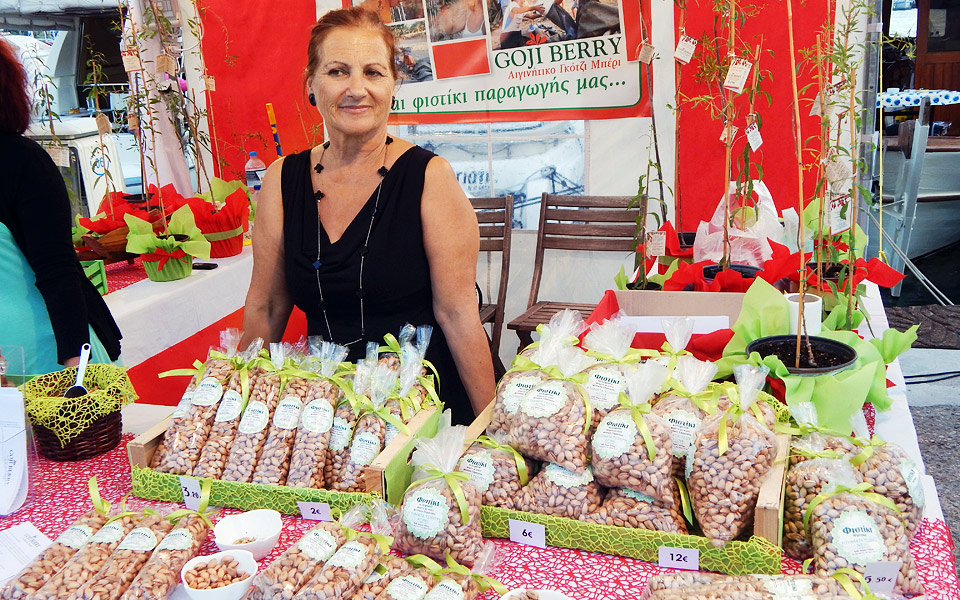
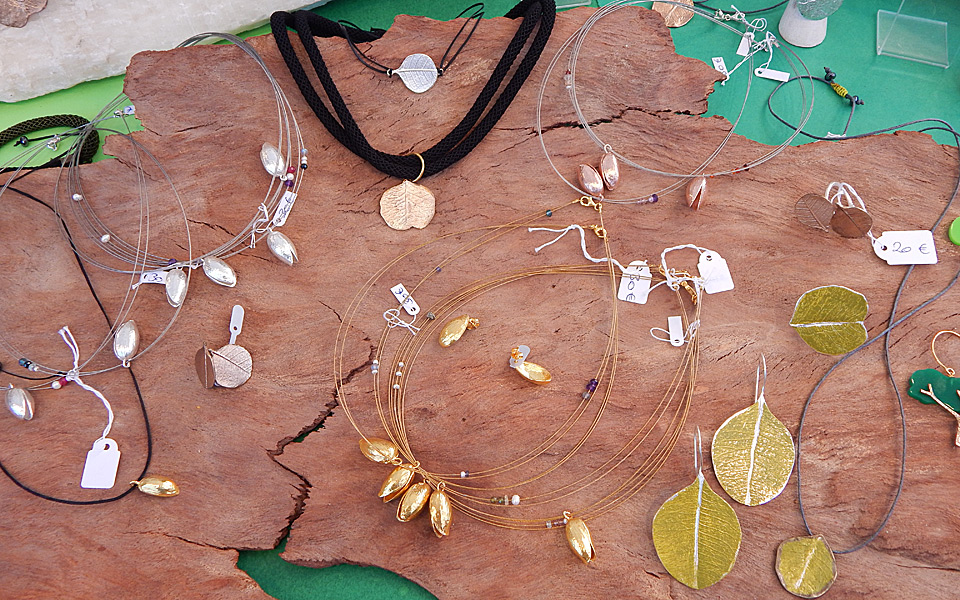
The island’s pistachio producers prepare months in advance, for this four day extravaganza. Numerous families are connected by tradition to the pistachio, while the great number of visitors provides a welcome bonus to their income. Pistachios are harvested in August and September, using age tested ways: under each pistachio tree, a sheet is spread and the foliage is beaten with long sticks to loosen the fruit and bring it tumbling down from its perch. The time has come for shucking and sorting. Unopened nuts are thrown away, or sold at a discount by the owners. Hollow nuts are processed, alongside other organic material, to become excellent fertilizer. The rest are spread on terraces (away from roaming gourmet animals) and drying is left to the sun’ s rays.
SOME HISTORY…
Aegina’s apellation nut made its way from Syria around 1910. The husky nut was subject to intense cultivation by local doctor Nikolaos Peroglu, upon electing residence there, in search of a healthy climate for his wife’s respiratory ailment. The early 20th century inhabitants grew olives and grapes –still produced in ample supply in Aegina– but were initially highly sceptical of pistachios. Retooling and acquiring know-how was a risky and expensive enterprise, especially for an untested crop. But Peroglu’s insistence paid off, with pistachios becoming highly popular in Greece and abroad, and the tree proving ideally suited to Aegina’s climate.
ONE DAY EXCURSION IN AEGINA
You’d do well to heed the advice of those who praise the islands in winter. Away from the maddening crowds, you will be able to enjoy the sights, learn more about local tradition, observe the residents’ way of life and get to know local celebrities. In Aegina, everything happens in the harbor area. Within ten minutes, you’ll have completed a walking tour of this crucial hub.
HERE ARE A FEW TIPS, YOU WON’T FIND IN ANY GUIDE BOOK:
Stepping off the boat, you will see a line of horse drawn carriages. Ask to ride with Stelios. He is the oldest and best known driver, guaranteed to give you the grand tour, from the street with stately 19th century homes and Apolo’s temple, to a visit tailor made to your taste, if you are knowledgeable enough. Every carriage fits four people, while a 20 minute ride will set you back 15 euros.
Halfway along the beach, you will come across mister Moira’s old cafe, famous for 60 years for its coffee making prowess. Order greek coffee for two, being certain that the total cost will not exceed 5 euros. If you choose to visit around dusk, ouzo and “amuse bouche” will abound.
Fresh vegetables are to be had at Nektaria’s fishing boat. Moored next to boats bringing in fresh fish, you will spot the ones selling fruit and vegetables. Ask for local produce!
Do visit the fish market! The fish’s freshness is self evident and enjoyed by all and sundry, even local cats vying for a scrap. Buy a sea bream, take it to Geladakis’ tavern –situated right behind the market– and ask them to barbeque it for you. If you’re in luck, it will be bouzouki night, with live music played by a local band.
HOW TO GET THERE
From Piraeus harbor, Gate E8, “flying dolphins” (fast ships) and ferry boats leave approximately every hour. Tickets cost between 9.30 euros and 14.50 euros per person.

